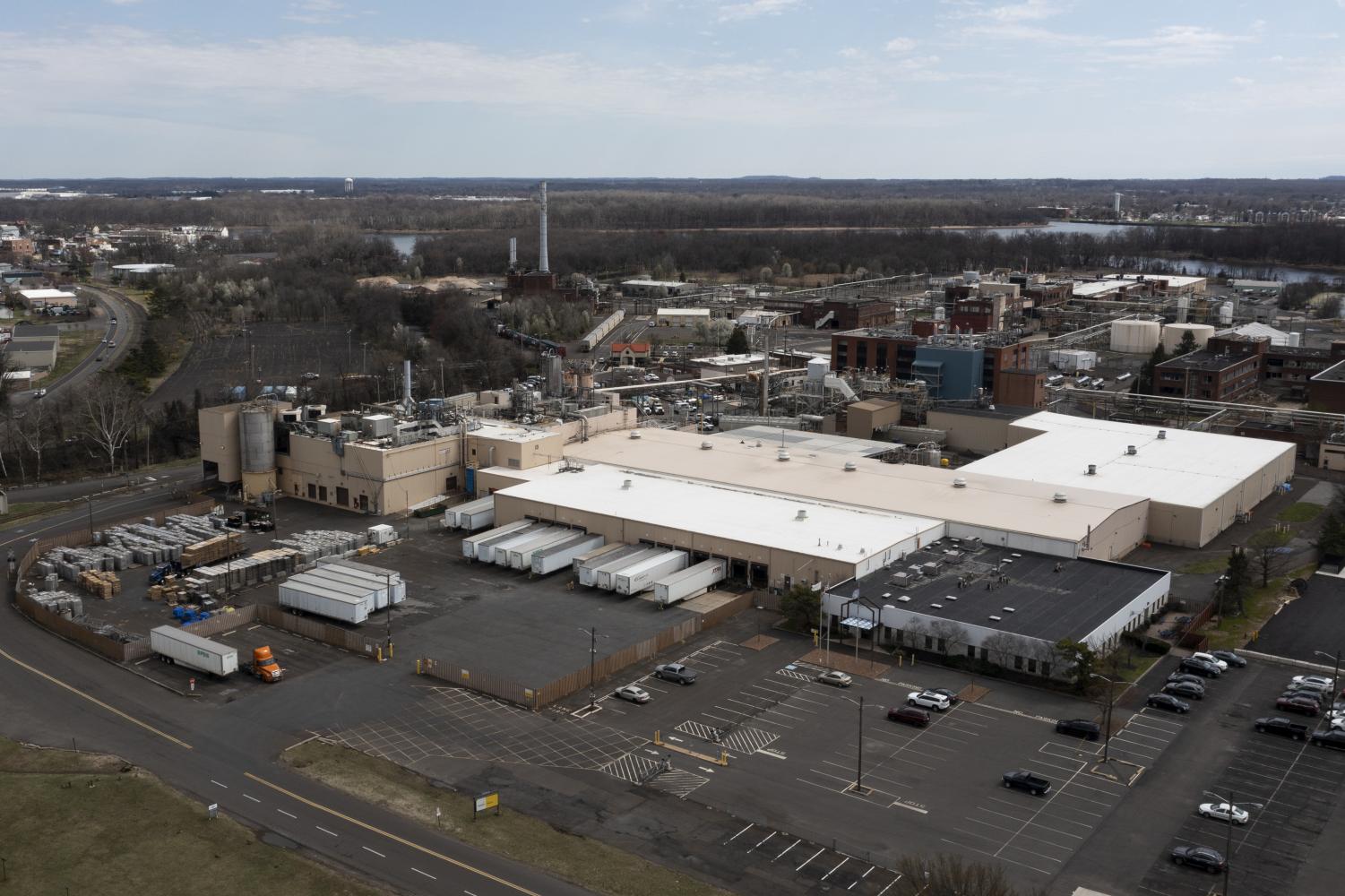Opinion | Delaware River chemical spill shows how companies continue to harm people and the planet


This aerial image shows the Trinseo Altuglas facility in Bristol Township, Pa., Monday, March 27, 2023.
On March 24, more than 8,000 gallons of acrylic polymer spilled into the Delaware River in Bucks County, Pennsylvania. Officials claimed that they did not find harmful levels of contaminants in the water supply after the spill, yet still encouraged citizens to buy bottled water for the sake of caution, saying they were not “100% sure that there won’t be traces of these chemicals in the tap water.”
Regardless of the actual amount of contamination, Philly residents scrambled for bottled water in stores, with many stores putting limits on or running out of their bottled water supply. In some instances, stores ran out of bottled water within hours after the city reported the possible contamination. With this disaster occurring just a few weeks after the East Palestine train derailment, one aspect of chemical disasters is certain — there is major governmental distrust in the American population.
Trinseo, a “specialty materials solutions provider” — a fancy term for a chemical plant — caused the chemical spill into the Delaware River. In a statement, Trinseo blamed the spill on equipment failure, but didn’t further specify how or why the equipment failed. At the very least, Trinseo is seemingly taking accountability for the cleanup. Thankfully, there weren’t high levels of contamination in the drinking water in this spill, and no one reported any adverse health effects. However, why did the spill happen in the first place?
Despite the assurances that there is no contamination in the water supply, some environmentalists believe that fish and plants may be harmed as a consequence of the spill. The nonprofit organization Delaware Riverkeeper Network said they will monitor the spill independently of Trinseo or other affiliations.
The Delaware Riverkeeper Network claims that although no government officials or citizens reported harmful impacts to wildlife, they encouraged people in a press release to remain vigilant if they “see, smell or witness concerning impacts to the River, fish or wildlife.”
Although the Ohio train derailment and the Delaware River chemical spill may not seem to have a direct connection, these two incidents represent a growing and overarching issue. Companies are careless, and it’s the people and environment who suffer. The United States transports 3.1 billion tons of hazardous material yearly. Even if spills are relatively infrequent, just one can have a significant effect on the environment and human health. We need to ensure that there is as little risk as possible when companies, trains or others are handling hazardous materials.
Environmental and public health disasters are not going away anytime soon. In fact, these catastrophes and close calls might become more extreme in our future with the rate of human impact on climate change. With large corporations making up the majority of the globe’s carbon emissions, we don’t need to add on to the damage with unnecessary toxins leaking into the environment. Every time an incident of a chemical spill or worse happens, it contributes to the growing issue — eventually, we’re going to make our planet inhabitable.
The public takes the brunt of these disasters, like the citizens of East Palestine. A man-made disaster caused the chemical release in Ohio, yet the citizens there are the ones suffering from possible long-term health effects.
Especially with the often expensive and inaccessible cost of American health care, populations who experience disasters like this are getting the short end of the stick. Now and in the future, the residents of East Palestine may experience both the physical and financial burdens of an incident they had no control over.
Human-caused environmental disasters and chemical spills play into the social determinants of health. Oftentimes people assume our health is determined by our individual choices in lifestyle. These disasters are something the public cannot control, yet we experience the harmful effects of them with little volition of our own.
Often when we hear about scares like this, we pray it’s not in our own backyard. Although it can be difficult to avoid every chemical spill, there are measures companies can take to avoid them at all costs — including proper containers, accurate labeling and intensive employee hazard training. Though regulations and guidelines for handling hazardous materials are already strict, doubling down on these precautions or investing more into prevention methods is worth the extra cost.
Lynnette Tibbott primarily writes about topics in the sciences and humanities. Write to her at LMT80@pitt.edu.
Recent Posts
Review | Delayed checkouts at ‘The White Lotus’: An unoriginal third season
(Contains Spoilers) There is no meditation class, no reiki session, no nutritionally balanced, organic food…
Celebrating Women’s History Month with the HerStory Slam Event
Idaya Sasikumar, a first-year psychology student, took to the stage to read her personal story.…
Review | Michael Franti & Spearhead reflect on the power of love in new album ‘Welcome to the Family’
Nothing says “Welcome to the family!” like a new baby. Soul-rock band Michael Franti &…
How hurling put me on ESPN and in a National Championship game
Nothing is more difficult than joining a new club in college. It is terrifying when…
Column | It’s now or never for Henry Davis
When Henry Davis came into Monday night’s game against the Washington Nationals at PNC Park,…
Pitt men’s basketball navigating transfer portal difficulties
Pitt men’s basketball is like any other team in the world of large NIL deals…

